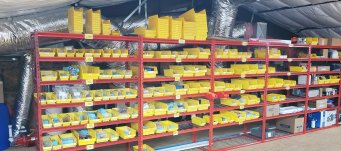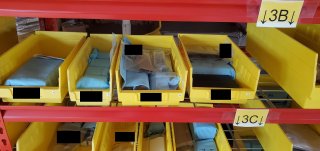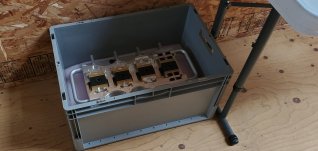Houndogforever
Hot Rolled
- Joined
- Oct 20, 2015
- Location
- Boring
As I keep creating fixturing to replace vises, I'm running into storage problems.
My fixture plates are stored on their side, however I don't know where to store my special cut vise jaws for repeat jobs. Right now they are in a vidmar but it is crowded not working well right now.
I was thinking maybe some Akro Mills bins, but I question how much weight those will hold, then line up 3 across and that is heavy.
Maybe steel shelves with slide out metal trays? Pull the box which contains all specialty item? Way back I used lockers, but never really liked that method.
How do you guys do it?
My fixture plates are stored on their side, however I don't know where to store my special cut vise jaws for repeat jobs. Right now they are in a vidmar but it is crowded not working well right now.
I was thinking maybe some Akro Mills bins, but I question how much weight those will hold, then line up 3 across and that is heavy.
Maybe steel shelves with slide out metal trays? Pull the box which contains all specialty item? Way back I used lockers, but never really liked that method.
How do you guys do it?





